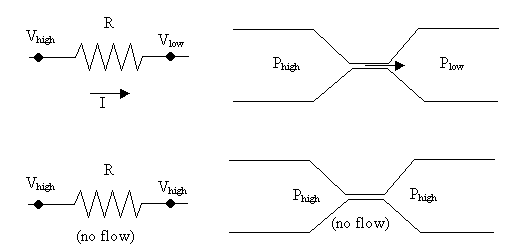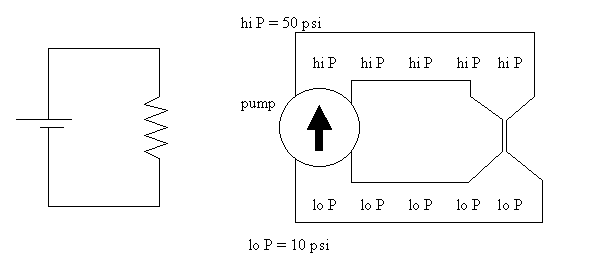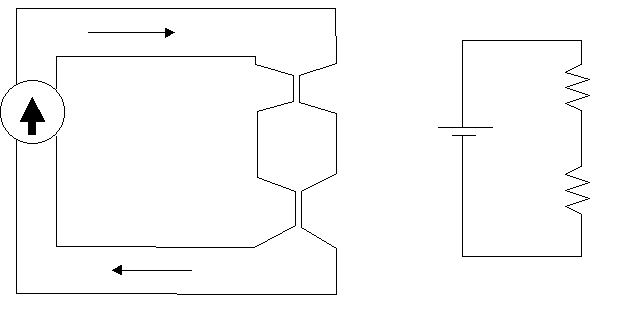

A resistor is like a constriction in a pipe; the resistor resists the flow of charge, the constriction resists the flow of water.


Voltage in a circuit is like pressure in a pipe. You need a voltage
difference to push charge through a resistor (![]() );
you need a pressure difference to push water through a constriction.
);
you need a pressure difference to push water through a constriction.
There is (almost) no voltage change (or drop) along a fat wire; there
is (almost) no pressure change along a fat wide water pipe. The voltage
drop occurs along resistors; the pressure drop occurs along constrictions.
A battery is a charge pump. The job of a battery in a circuit is to maintain a constant voltage difference between its terminals; the job of a water pump is to maintain a constant pressure difference between its intake and output, regardless of the flow through the pump.

Resistors in series have the same current (coulombs per second). The
flow of water (gallons per minute) through pipe constrictions in series
is the same. (Remember: there are no leaks or air bubbles in the pipes.)

Resistors in parallel have the same voltage. Pipe constrictions in parallel
have the same pressure difference.
